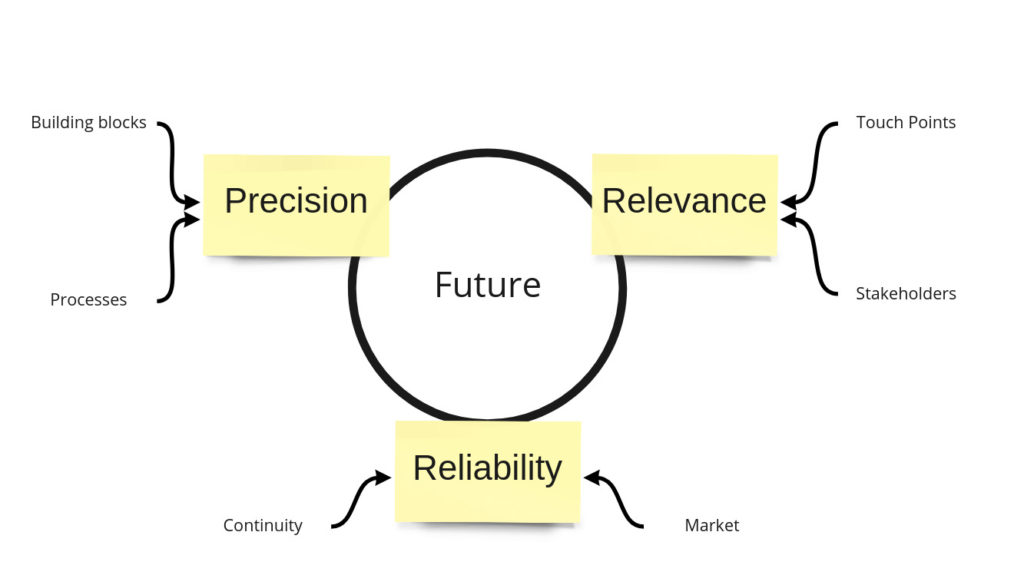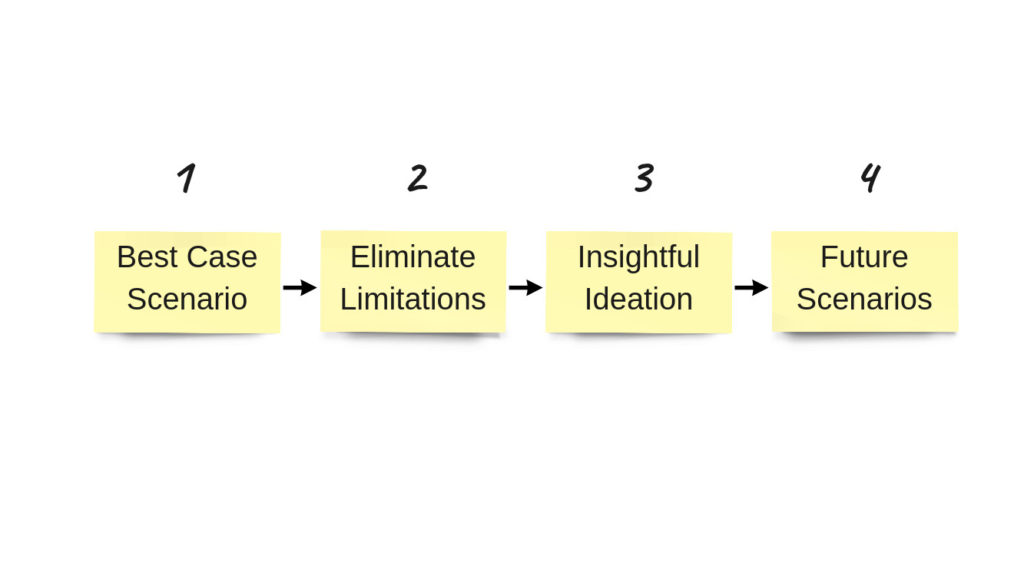How to predict the Future
Table of contents
It’s not hard to predict the future. The hard part is to predict it reliably, precisely and to describe something, that is relevant today.
When predicting the future some go to the extreme and talk about “How we live in 100 years”. That is especially hard, works out only in rare cases and although it leaves you in awe you have to ask: “So what?”. So here is how I go on about doing it and how I try to make sure to generate relevant, precise and reliable predictions.
Reliability in this regard relates to the question if the prediction is actually coming true. Of course this is a hard part that mainly relies on the continuity of what is going on. It implies, that things are basically progressing further along the path they have been for a while and therein lies the main limitation. It is hard to anticipate inventions, that are simply so revolutionary, they can be considered completely new. We also have to factor in socioeconomic factors (or market dynamics). Technological progress is meaningless if it is not embraced by society. Political and societal effects can stop technology advances anytime for better and for worse. Predicting these effects is very hard, as marketing, storytelling and branding play a vital part in how society reacts towards a new product.
"Of Course he is going to talk autonomous vehicles…" - Yes, I am.
A good example would be self-driving cars. Think about it for a second. Can you reliably predict, that there is a future of autonomous driving ahead? If anything, today (2022) I can think of a thousand reasons why it will not be widely (meaning on the majority of roads and driving) adopted. But what we can say reliably: All technological challenges along the way of building autonomous vehicles, will be solved for sure. There is nothing in the realm of tech holding us back from perfecting it. What are the socioeconomic effects? What inventions would invalidate (e.g. autonomous micro-trains) or accelerate (e.g. separate roads) the development?
Precision requires us to understand the technicalities of the system (product, market or environment), that we want to predict in sufficient detail. I am deconstructing the system into all its parts (building blocks) in workshops and interviews to build a coherent understanding of it. Then I want to understand the elements, who are acting and the entities, that are acted upon to build a more broad understanding of the values each component is bringing. This lays the groundwork to build a more precise understanding of where innovation can happen, where pains are felt today and where progress is being felt today or has not been seen for a while. In short we have to understand the building blocks and processes operated through the system to form a precise understanding of its value creation process.
Relevance is what this is all about. If we are predicting the future of a grain of sand in the Baltic sea – frankly – who cares? To answer the question (who cares?) we need to form an understanding of the Stakeholders (e.g. Users, Investors, Creators) and understand the individual touch points each stakeholder has with the system. We can overlay touch points and the stakeholders interacting with them to understand, which touch points contribute most to the value creation within the system and voilà: These are the ones, which are most relevant.
What we built so far is a comprehensive understanding of the current state. So what? a) You can definitely do this with a fictional product as well (one you imagine to have in the future) b) We are not done with this topic just yet.

Extrapolate into the future
1
To build an understanding of the future, a good starting point is … today. Today, however is never up to what it could be. Today performance of systems is held back by legacy systems, financial and time restrictions. Restrictions, that are not inherent to the system in general, but in particular. Restrictions, that are unique to the implementation within a given environment and would be different if implemented from scratch or in another environment. To start us up, we want to eliminate these restrictions and go with an ideal version of today, as if we were to implement the system anew today.
2
Looking at the building blocks and processes of this best-case scenario, we can then identify limitations (e.g. bandwidths, latencies, durations, access) within the systems. Now eliminate those limitations. Image, bandwidth or access is not a problem anymore for each individual building block in the system. Ask yourself: How would that affect the system?
3
Have you seen another system or industry, where this limitation was eliminated already? This is where trend reports and general insights from other industries are very helpful. You can now generate ideas of new possibilities unfolding based on a future, where one or more limitations are eliminated.
4
And finally wrap this is in one or more relatable story from the perspective of the stakeholders in the system.

I have now used this approach multiple times and it really works quite nicely for me. If you have to predict the future for your product or strategy and use this or a similar approach, let me know!